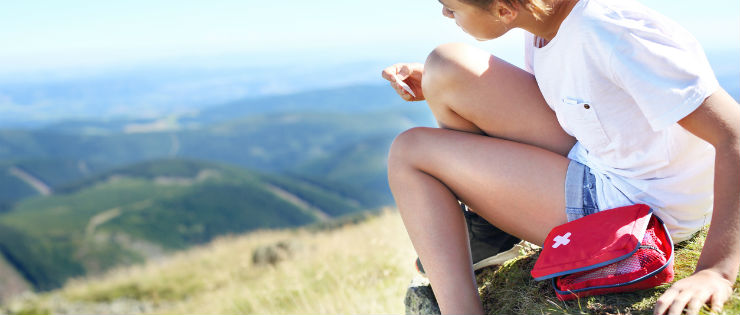
Accidents can happen when we’re at home and when we’re traveling, so it’s important you have a first aid kit ready at all times. At home, you can have a large kit stored in a cupboard anywhere in your house. When you’re traveling, however, you have limited space to store your first aid kit.
Road Trip
If you are taking a road trip, it’s best to find a place in the car for your kit so that it can still be easily accessed when you are fully packed. It may be tempting to place the kit in your caravan where you may have more space, but if you are taking day trips without the caravan, you may be without your first aid bag.
Plane Trip
If you are traveling by plane, you may have even less space and weight allowance than if you were traveling by car. You may want to divide your kit into items you may need at any time in your hand luggage and items you won’t need until after you arrive in your suitcase. Also, don't forget to get travel insurance before you leave.
What Should your Kit Contain?
This is a difficult question because the kit will depend on who is traveling and what type of activities you are likely to be doing on your trip. The first aid kit of a traveling elderly couple will look quite different to that of a young family. If you are in a large city and within easy access to professional medical treatment, you will not need as much in your kit as you would if you are traveling in the outback hours from any emergency assistance.
There are however some basic items that you should consider including in your kit:
Painkillers – for a headache or any kind of pain that needs some relief.
Antihistamine – in case of an allergic reaction to a sting or food item.
Bandages – large enough that they can be used on head wounds, grazes, cuts, sprains to stop bleeding and immobilise a limb.
Ice pack – one that doesn’t need a freezer that can be activated when needed.
Burn Gel – pain from a small burn on a finger or larger sunburn area can be eased with some gel particularly if you don’t have access to cold water.
Band-Aids – for small cuts, grazes and blisters.
Sterile Wipes – clean wounds before covering with a Band-Aid or bandage to reduce the chance of infection setting in.
Dressings & Tape – for larger size grazes that need covering.
Saline – for washing out eyes and grazed skin.
If you are traveling with children make sure you are carrying medicines suitable for both adults and children.
First Aid Skills
Remember a kit is only as good as the person administering the first aid. Before you travel make sure you know how to use everything in the kit. If you aren’t sure how to apply a pressure bandage, what to do for a snake bite or broken limb if you are far from medical help, add a first aid refresher course to the list before you travel.
Know How to Get Help
Either before you travel or after you arrive, find out how you will call for emergency help. If you are travelling to another country, know the emergency telephone number. If you are going to be in a remote part of Australia with patchy mobile phone reception, decide if you will use a satellite phone, CB radio or Personal Locator Beacon.
HIF Ambulance Cover
We hope you will never need to call an ambulance, but if you do you will want the fees covered. Check out HIF’s Ambulance Cover for details of benefits in your state.